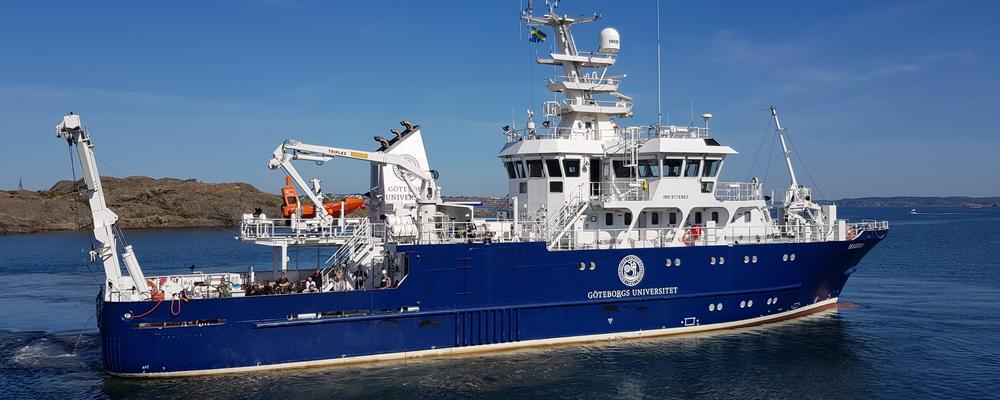The methane gas from Nord Stream continues to leak into the southern Baltic Sea. In a collaboration between the University of Gothenburg, SLU and the Swedish Agency for Marine and Water Management, marine researchers went to the site of the leak to find out its extent.
“There are many questions to be answered. How much of the methane gas rises into the atmosphere and how much of the gas dissolves in the water? Where does this gas go with the currents?” says Katarina Abrahamsson, marine chemist and coordinator of the expedition.
Team of scientists onboard
Due to a postponed research trip to Iceland, Skagerak was available at home port in Gothenburg and could be used for this urgent need. A team of scientists was set up, to find out as much as possible about the gas release and its consequences.
“At Skagerak, we have researchers with many different skills in the marine research area. As a marine biologist, I am focused on how the gas affects biological life. But we have several marine chemists who, among other things, measure methane levels and acidification, and an oceanographer who can calculate the distribution based on ocean currents in the area,” says marine biologist Thomas Dahlgren.
Research that respects safety framework
Skagerak left Gothenburg last Sunday, and a day later the measurements began in the area. Within the framework of the safety distances established by the coast guard, the researchers must make the necessary measurements that can convey what impact the emissions have on the environment in the Baltic Sea. The expedition is expected to return to Gothenburg on Thursday evening.
“The water closest to the bottom in the area is low in oxygen, and this means that the methane has a greater environmental effect. This is one of the reasons why I am so concerned about various fish stocks, such as cod. We also expect to see a methane-eating bacteria bloom in the water, which can disturb the food web,” says Thomas Dahlgren.
Collaboration with SLU
SLU's research vessel Svea makes regular measurements in the Baltic Sea. Just two weeks ago, salinity, oxygen level, temperature, and more were checked in the now affected area. This is very fortunate, because that makes it easier for the researchers to see what impact the gas leak has had on the environment.
“Svea is also on its way to the area and we will collaborate closely with them and have researchers on board Svea as well,” says Katarina Abrahamsson.
When will you receive the results from your expedition?
“We immediately get some results, such as methane gas levels and distribution. But the full picture and analysis may take a couple of months. It's also very important to make follow-up measurements on the site to understand what consequences the release will have in the future. The methane stays in the water for a long time,” says Katarina Abrahamsson.
Note: SLU is the Swedish University of Agricultural Sciences
Contact: Thomas Dahlgren, marine biologist at the department of marine sciences phone: +46 (0)703-66 20 42, mail: thomas.dahlgren@marine.gu.se

